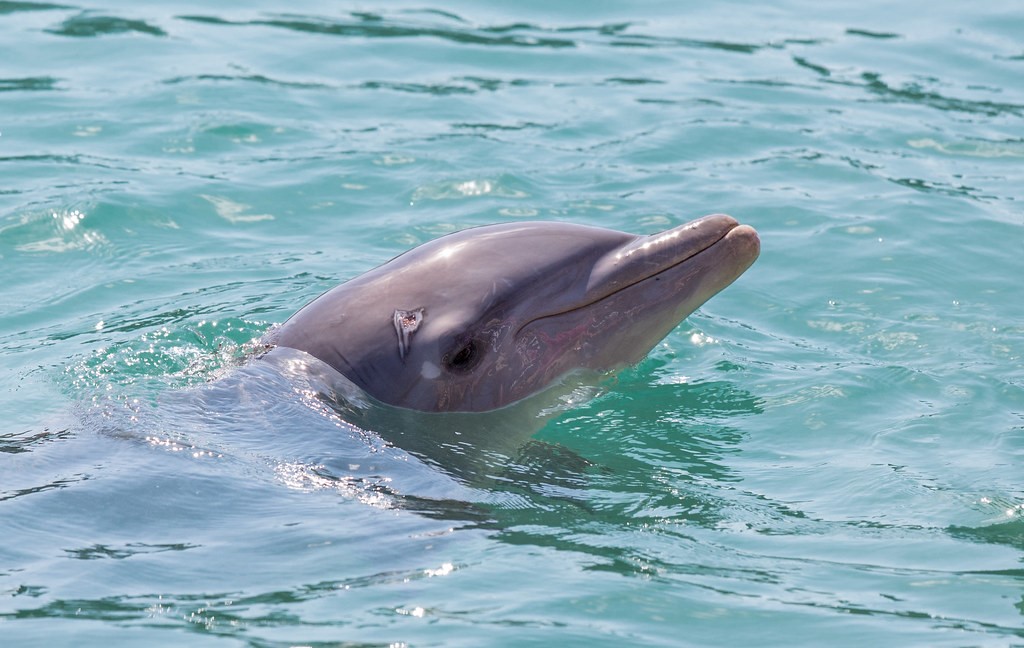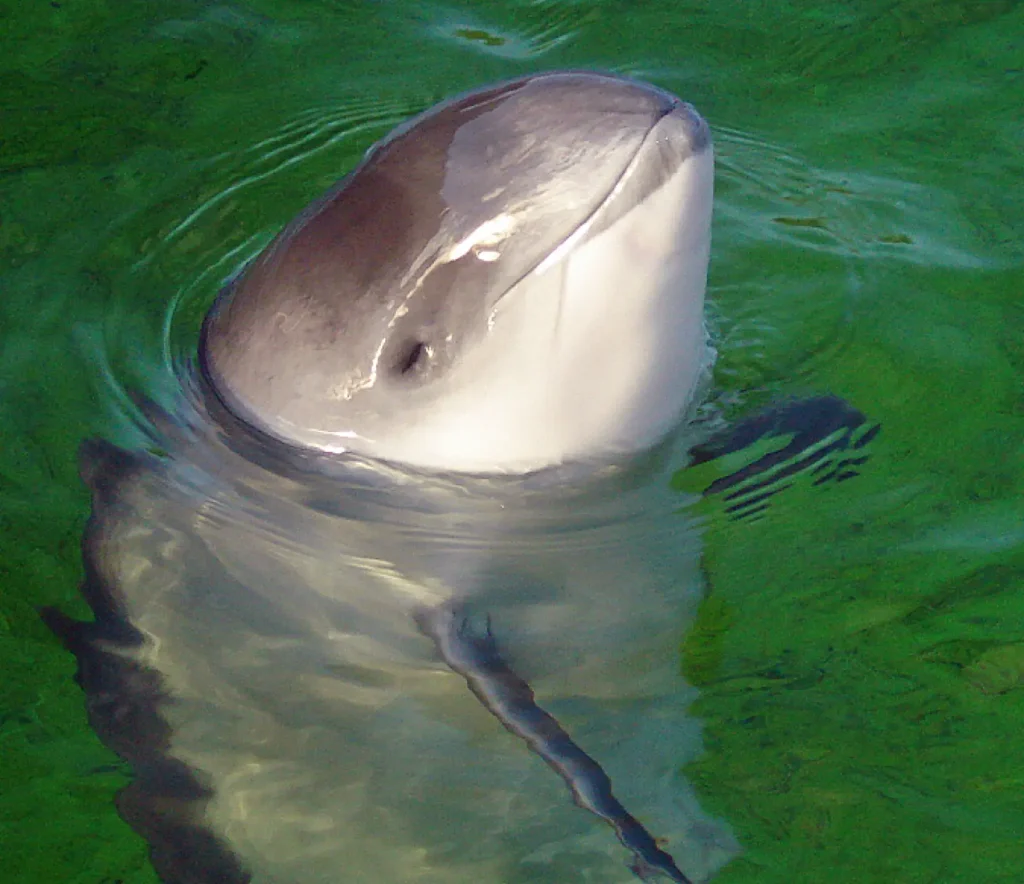
Are you looking for an exploration of the differences between porpoises and dolphins?
These marine mammals, often confused due to their similar appearances and habitats, actually exhibit distinct characteristics and behaviors.
This article delves into the key distinctions between porpoises and dolphins, shedding light on their unique traits and adaptations.
Porpoise Vs. Dolphin: Porpoises have smaller mouths and spade-shaped teeth, while dolphins have longer snouts and conical teeth.
Table of Contents
Physical Characteristics
Porpoises and dolphins display notable differences in their physical features, particularly in their mouth structure and body shape.
These distinctions reflect their unique adaptations for feeding and navigating through their marine environments. [Porpoise Vs. Dolphin]
| Characteristic | Porpoises | Dolphins |
| Mouth Size | Porpoises typically have smaller, rounded mouths | Dolphins have longer, pointed snouts |
| adapted for grasping and holding onto small prey | suited for catching and tearing larger prey | |
| Teeth | Porpoises possess spade-shaped teeth | Dolphins have conical teeth adapted for |
| designed for grasping and holding onto prey | grasping and tearing prey apart | |
| Body Shape | Porpoises tend to have a more robust body build | Dolphins have a streamlined, sleek body shape |
| facilitating swift movement through the water |
The narrower, more rounded mouths of porpoises reflect their predilection for smaller fish and squid. On the other hand, the conical teeth and lengthened snouts of dolphins are designed for snagging and eating larger prey, like fish and cephalopods.
Furthermore, compared to porpoises, dolphins are better at hunting and navigating due to their streamlined body form, which makes them more agile in the water.
The ecological roles and behaviors that porpoises and dolphins display in their different marine habitats are influenced by these anatomical distinctions.
See Also: Orcas vs. Dolphins: Are Orcas Faster Than Dolphins?
Behavior and Communication
The behavior and communication patterns of porpoises and dolphins offer further insights into their differences. Dolphins are renowned for their complex social structures and highly vocal nature.
They engage in a wide array of vocalizations, including whistles, clicks, and pulsed sounds, which serve various communication purposes within their social groups.
These vocalizations are not only used for coordinating group activities such as hunting and navigation but also for individual recognition and social bonding.
In addition, dolphins display complex behaviors like cooperative hunting, in which they cooperate to bring down prey. [Porpoise Vs. Dolphin]
Dolphins are intelligent and have strong social relationships, as seen by their cooperative behavior, which involves effective communication and strategic planning to accomplish objectives.
They are also renowned for being gregarious and inquisitive, frequently interacting with people and other aquatic animals through acrobatic displays.
Conversely, compared to dolphins, porpoises are known to spend more lonely lives and exhibit fewer instances of sophisticated social relationships.
For communication, they typically use simpler vocalizations and are quieter. Porpoises do not display the same degree of social complexity and cohesiveness as dolphins, despite the fact that they occasionally form small groups or pairs.
Variations in the availability of prey, habitat preferences, and evolutionary history may be the cause of their solitary lifestyle.
See Also: Pilot Whale Vs. Orca : Unveiling The Rivalry

Social Structure
The social structure of dolphins is one of their defining characteristics, often setting them apart from porpoises. [Porpoise Vs. Dolphin]
Dolphins are highly social animals that form tight-knit communities known as pods. These pods can vary in size from a few individuals to several dozen, depending on the species and environmental factors.
Within these pods, dolphins develop strong social bonds through frequent interactions, communication, and cooperative behaviors.
Dolphin social dynamics are typified by cooperative hunting, in which individuals identify, pursue, and catch prey cooperatively. This kind of teamwork improves social cohesion within the pod in addition to increasing hunting success.
Dolphins also play, mate, and take care of their young, among other social activities that strengthen their bonds and support their group structure.
Dolphins’ complex social dynamics help them to adapt and survive in a variety of maritime habitats. Dolphins can explore and utilize resources in a variety of settings, from wide oceans to coastal waters, by banding together in cohesive pods.
Benefits of this social structure include sharing information about migration paths and food sites, as well as defense against predators.
In contrast, porpoises exhibit a more solitary or less complex social structure compared to dolphins. [Porpoise Vs. Dolphin]
While they may occasionally form small groups or travel in pairs, porpoises generally do not exhibit the same level of social cohesion or cooperative behaviors observed in dolphins.
This difference in social structure may be influenced by factors such as prey availability, habitat preferences, and evolutionary history.
See Also: Pompano Dolphinfish Vs Mahi Mahi: The Battle of the Sea Kings

Habitat and Distribution
Porpoises and dolphins have distinct habitat preferences influenced by factors such as water temperature, prey availability, and reproductive needs.
While both are distributed globally across oceanic and coastal regions, they often occupy different habitats within these areas.
| Characteristic | Porpoises | Dolphins |
| Preferred Habitat | Colder waters, temperate climates, coastal areas | Warmer waters, tropical and temperate regions |
| Distribution | Worldwide distribution in various oceanic and coastal | Global distribution with a preference for |
| regions | tropical and temperate climates | |
| Adaptations | Physiological adaptations for colder waters, such as | Preference for warmer waters influenced by |
| thick layer of blubber for insulation, streamlined | factors like prey abundance and breeding | |
| body shape for efficient swimming in coastal habitats | opportunities |
Dolphins are frequently linked to warmer seas, particularly those found in tropical and temperate climates. These areas support a variety of marine habitats, including offshore pelagic zones, coastal bays, and coral reefs.
These areas offer plenty of food resources as well as ideal circumstances for procreation and childrearing. [Porpoise Vs. Dolphin]
In response to environmental cues, dolphins may possibly migrate seasonally, which would increase their spread throughout various ecosystems.
Porpoises, on the other hand, are often located in temperate climes and cooler waters, however, certain species may live in warmer areas. Foraging on small fish, squid, and crustaceans, they like coastal regions, estuaries, and inshore seas.
Porpoises have evolved physiological adaptations, such as a thick layer of blubber for insulation and a streamlined body shape, to thrive in colder waters and efficiently navigate coastal habitats.
See Also: Dolphin Vs. Dolphinfish: Unveiling the Key Differences

Adaptations to Environment
Dolphins and porpoises have developed unique morphological and behavioral traits that enable them to flourish in their various oceanic habitats.
With their conical teeth and long snouts, dolphins are well-suited to hunting and eating a wide variety of prey in open sea environments.
Larger fish and cephalopods can be easily caught and torn apart by their sharp, conical teeth, and they can also be detected and pursued by their elongated snouts.
In addition, dolphins have strong tails and streamlined bodies that allow them to move quickly and agilely over open water. [Porpoise Vs. Dolphin]
These anatomical changes improve their hunting effectiveness and general survivability in pelagic habitats, where they frequently come across swiftly swimming prey and must navigate large oceanic areas.
Porpoises, on the other hand, have characteristics that make them suitable for feeding in estuaries and shallower coastal areas.
Because of their smaller jaws and spade-shaped teeth, they are better able to catch and eat the smaller fish and squid that are present in these environments.
The rounder snouts and shorter, stronger bodies of porpoises are adaptations for navigating the narrow and frequently shallow waters of coastal environments.
Furthermore, because they are smaller than dolphins, they may reach prey in places that bigger marine predators might find challenging.
These unique adaptations illustrate the porpoises’ and dolphins’ specialization for various foraging locations and prey species, as well as the ecological niches they occupy.
Understanding these adaptations provides valuable insights into the ecological roles played by these marine mammals and their interactions within marine ecosystems. [Porpoise Vs. Dolphin]
See Also: Pilot Whale Vs. Dolphin: The Ultimate Battle of the Giants
Conservation Status
Threats to the survival of porpoises and dolphins include habitat loss, pollution, climate change, and becoming entangled in fishing gear.
For these iconic marine species to be conserved, it is imperative that these dangers be acknowledged and addressed.
For porpoises and dolphins alike, habitat loss and degradation brought on by pollution, coastal development, and climate change present serious obstacles.
For these marine mammals, the destruction of coastal habitats like mangroves and estuaries might interfere with vital areas for feeding and breeding.
Their habitats may be contaminated and they may be exposed to toxic substances due to pollution from industrial runoff, agricultural pesticides, and marine debris.
Furthermore, dolphins and porpoises around the world are seriously threatened by entanglement in fishing gear, such as longlines and gillnets. [Porpoise Vs. Dolphin]
These species may suffer harm or even die as a result of accidental bycatch in commercial fishing operations, which can disturb marine ecosystems and lead to population decreases.
Meticulous efforts are required to reduce threats and safeguard vital habitats for dolphins and porpoises in order to overcome these conservation issues.
This entails putting into effect sustainable fishing methods, creating marine protected areas, cutting pollution, and spreading the word about how crucial it is to preserve these marine animal species.
We can strive to secure the long-term survival and well-being of these cherished animals as well as the marine ecosystems they call home. [Porpoise Vs. Dolphin]
This can be achieved by acknowledging the unique difficulties faced by porpoises and dolphins and putting in place targeted conservation programs.
See Also: Humpback Whale Vs Orca: Ocean Giants Showdown

Frequently Asked Questions (FAQs)
What Is The Main Difference Between Porpoises And Dolphins?
Porpoises have smaller mouths and spade-shaped teeth, while dolphins showcase longer snouts and conical teeth. Additionally, porpoises tend to have a more robust body shape compared to the sleeker build of dolphins. [Porpoise Vs. Dolphin]
Do Porpoises And Dolphins Live In The Same Habitats?
While both inhabit oceans worldwide, dolphins prefer warmer waters, including tropical and temperate climates, while porpoises are commonly found in colder waters, coastal areas, and estuaries.
Are Porpoises And Dolphins Endangered Species?
Certain species face conservation challenges due to habitat loss, pollution, climate change, and entanglement in fishing gear. Conservation efforts are essential to protect these marine mammals and their habitats. [Porpoise Vs. Dolphin]
Conclusion: Porpoise Vs. Dolphin
Finally, hopefully, you now have a deeper understanding of the unique traits and behaviors that differentiate porpoises and dolphins.
By appreciating these differences, you can better appreciate the fascinating world of marine mammals.
It’s crucial to tailor conservation efforts to protect both porpoise and dolphin species, ensuring their survival in our oceans for generations to come.

Mr. Das, a certified pharmaceutical scientist, holds a Bachelor of Science in Pharmaceutical Sciences and passionately contributes to dolphin conservation as a member of the committee in Bangladesh.


